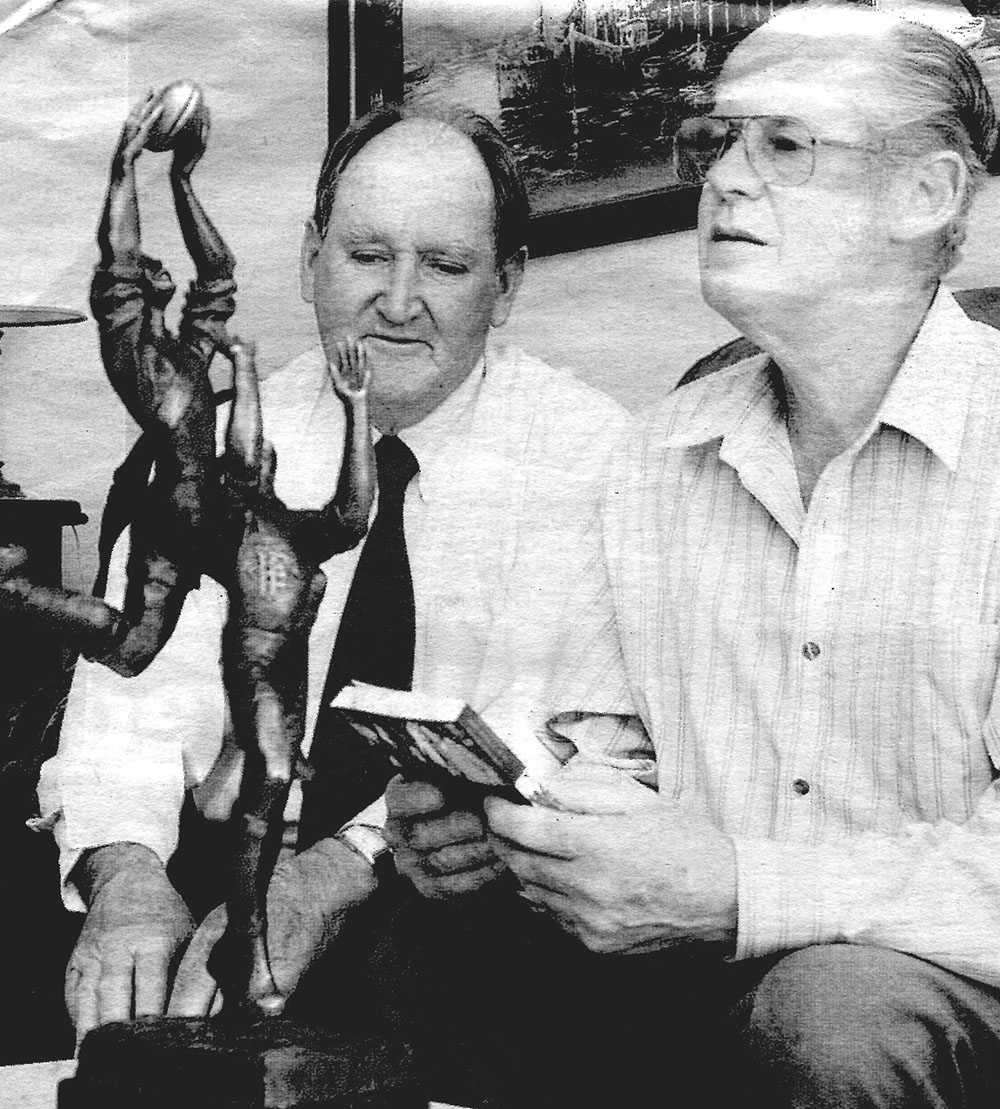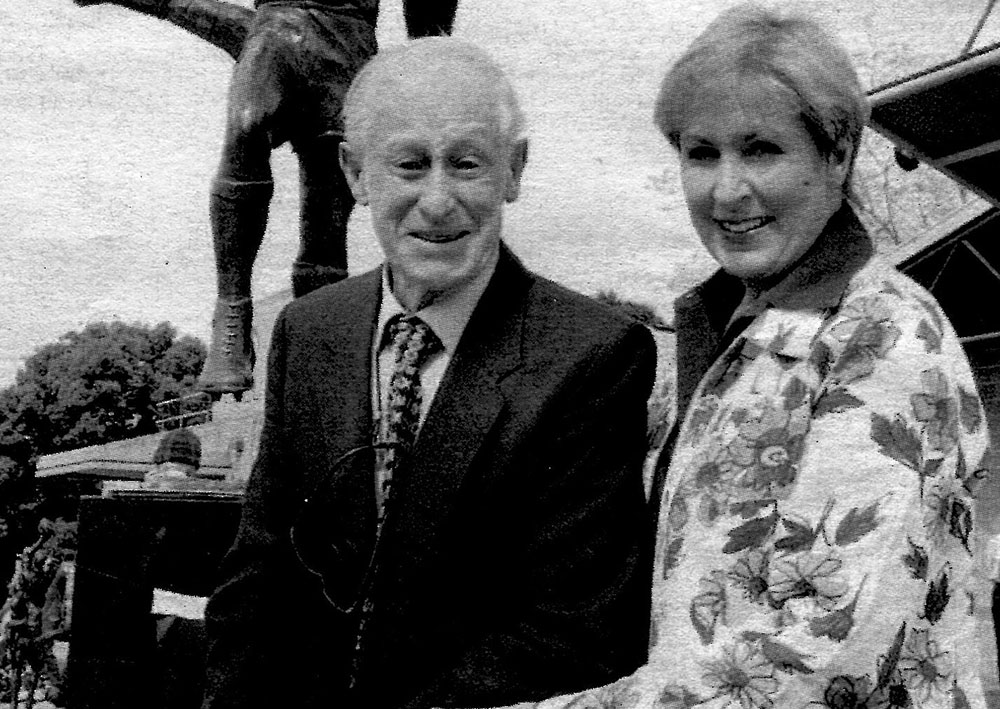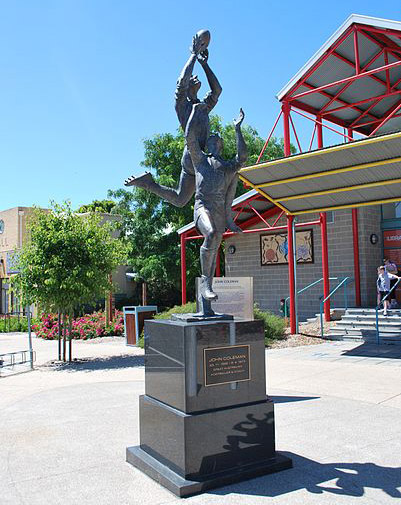
By Lance Hodgins
At the bottom of High Street, Hastings – opposite the library and Hastings Hall – is a four metre high statue of the town’s favourite son – champion Essendon footballer John Coleman.
It shows Coleman taking one of his famous high marks. Coleman had played for Essendon, and later coached them to two premierships. He was later named full forward in the AFL team of the century and also chosen as one of the 10 greats in the AFL Hall of Fame. His name lives on in the Coleman medal, which is awarded to the top goalkicker each year in the AFL.
The $100,000 bronze sculpture was a ten year project – a decade full of dedication, determination and frustration.
How did it all begin?
We need to go back to October 1952 when Peter McCullough, a wide-eyed 12 year old football fanatic from Rushworth, was taken by his father to see a charity football match at Rochester against a visiting team from Hastings.
It was to be a special occasion as both teams were sprinkled with League stars – Rochester with Footscray and Geelong players and Hastings with Essendon players. A youthful Ted Whitten (“Mister Football”) was among the Rochester players, but the young boy’s eyes were firmly fixed on his hero – Essendon’s John Coleman. It was a day he would never forget.
Fast forward forty years to 1993. After a career with the Country Roads Board, Peter found himself running the Hastings Newsagency with his son Cameron. It was not long before the conversation with the locals turned to football and “their lad”, John Coleman.
Coleman was actually born in Port Fairy but had come to Hastings with his family in his mid teens. In 1947 he first played football with Hastings and as an 18 year old full forward kicked 137 goals, followed by 160 goals in 1948, including 23 in one game against Sorrento. The Blues won premierships in both those years.
He went into the VFL in 1949 and kicked 12 goals for Essendon on debut against Hawthorn. Many Hastings folk would “desert” their town each Saturday to join the band of fans who would change ends each quarter just to be behind the goals that Coleman was peppering.
From that time forward, the names Coleman and Hastings became synonymous.

The Hubert Opperman statue at Rochester 
The sculptor Steve Glassborow
The idea of a statue is born
Many of Peter McCullough’s customers were still Essendon fans decades later.
One was Albert Coleman, John’s brother and a local footballer of considerable ability, who would frequently drop in to the shop for a chat. Another was Vic Jeremiah, the official historian of the Hastings Football Club and the co-author of a book on Coleman’s life and career. Both would play major roles in the creation of the statue over the next ten years.
At that time a statue had been erected in Rochester, the birthplace of Sir Hubert Opperman, world famous cyclist. Opperman had held over 100 world cycling records and was voted Europe’s most popular sportsman in 1928. He later served as a Minister in the Menzies and Holt governments.
Wouldn’t a similar memorial look good in the main street of Hastings?
Peter decided to contact the organisers of the Rochester statue and ask them how they had gone about their task. What did it cost? How did they raise the money? Who was the sculptor? What was he like to work with?
The answers were encouraging. The Opperman statue had cost $31,000 – seen as an achievable amount – and the sculptor was Steve Glassborow, who “did a good job and was an easy man to work with.”
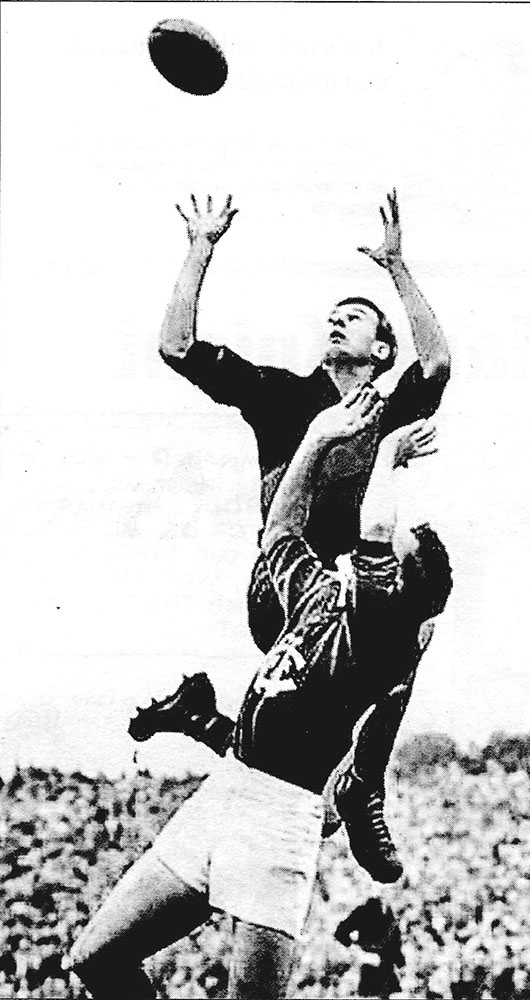
The sculptor
Born in Hammersmith, England, Glassborow completed his studies and apprenticeship before moving to Australia in the early 1980s, where he soon became widely known as a young professional sculptor, specialising in bronze figures.
He took great pride in careful anatomical study, and in his work he tried to show fluidity in the body while still achieving sharp muscular perfection. When Glassborow was approached to do the Coleman statue, he eagerly embraced the concept – the action being shown in the statue would be a great opportunity for him to show his skills.
In from the cold
Once he had engaged a sculptor, Peter McCullough wrote letters seeking support: firstly to the Essendon Football Club and then to the newly-created Mornington Peninsula Shire. He failed to get an answer from either and, utterly disappointed, he allowed the idea to lapse for over a year.
Finally a local businessman, Rob McCarthy, reignited Peter’s enthusiasm with a novel idea for raising funds. Instead of seeking donations, “maquettes” could be made and those miniatures would be sold to interested sponsors.
A committee was set up consisting of McCullough, McCarthy, Jim McGrath of the Hastings Social Club (who attended to the financial side of the project), with Vic Jeremiah and Cr. Brian Stahl.
Greg Hunt MP was a patron of the project.
The idea of the miniatures was welcomed but it immediately hit a snag. As Coleman was noted for his high flying marks, Peter’s committee felt that the statue should depict an action encounter, and this would mean two figures – which automatically doubled the sculptor’s fee. They would now have to find buyers of ten maquettes for $10,000 each to cover the increased cost.
Well-known community benefactors Don and Hild Hodgins set the ball rolling. Don envisioned the statue in front of the library in the main street, and immediately wrote a cheque for the first maquette.
Others soon followed: The Hastings Club, Martin Chiminello, Victor Jeremiah, Speedie and Associates, Bay West Real Estate, Thompson Property Group, the Coleman Family, Ray White Real Estate, Max and Jan Beck and, ultimately, the Essendon Football Club.

Peter McCullough and Vic Jeremiah inspect a maquette of the statue 
Albert Coleman with John’s daughter, Jenny Goullet, at the unveiling
Work begins
The sculptor, Steve Glassborow, set to work in his meticulous fashion.
Coleman had already passed away at the early age of 44 in 1973 so the sculptor would have to rely upon family and photographs to accurately capture the football hero of half a century ago.
Hastings Football Club Historian Vic Jeremiah was the greatest source of information. Vic had a treasure trove of photos of the great footballer – all kept in his “Dead Sea scrolls” – a term given by some to the large scrapbooks that “very few people are allowed to see, let alone touch”.
The football uniforms with their logos and even the number of studs in his boots were researched. Vic checked his photos and also the actual boots that exist in Essendon’s Hall of Fame museum.
Input also came from the Coleman family and brother Albert was able to correct detailed things, such as John’s hair style, on an earlier plaster model.
The committee even found the “other man” in Vic’s photo – Fitzroy player Tom Meehan, who was living in Rye. His likeness in the statue was also double checked for authenticity.
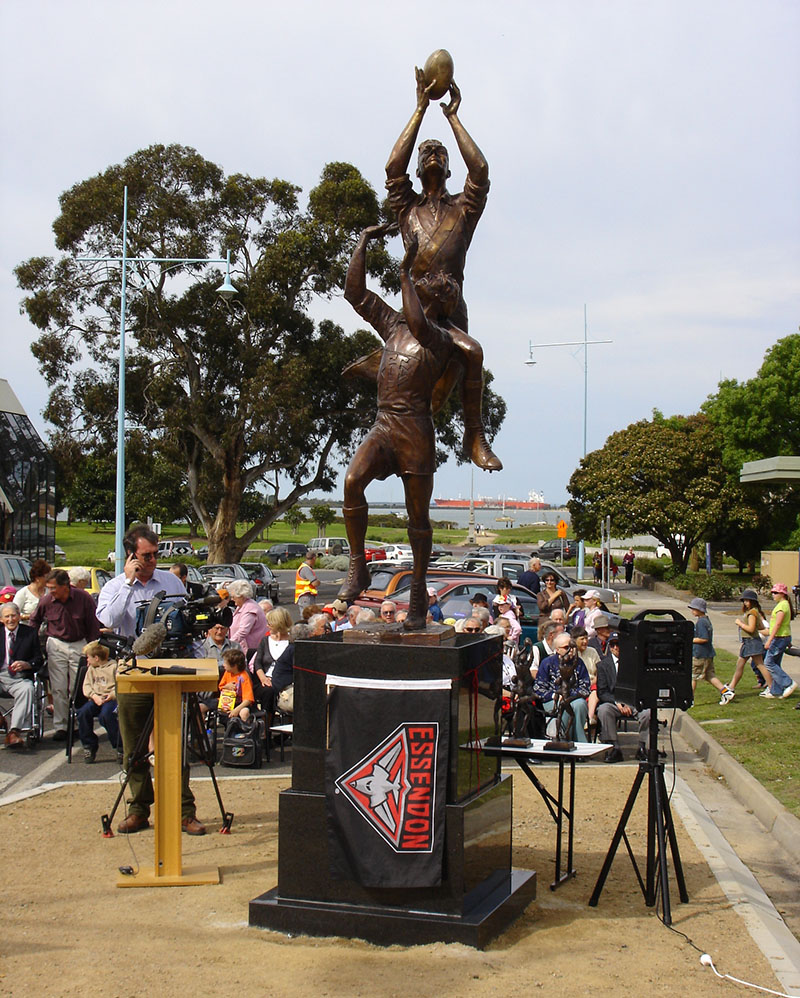
The Unveiling
Finally the great day arrived. On Thursday 22 September, 2005 the intersection around the statue was blocked by several hundred people, including about thirty of Coleman’s former teammates, from Essendon, as well as a number from Hastings including his old coach, George Slocombe.
Peter McCullough welcomed the large gathering, particularly the family and former teammates. He also described Coleman’s first game with Hastings.
Essendon teammate Greg Brown spoke glowingly about Coleman’s charisma.
Flinders MP Greg Hunt stressed the value of the statue to the community.
Then Coleman’s brother Albert and his daughter Jenny unveiled a plaque to commemorate the occasion and thanked the community for their recognition.
The hardworking committee was pleased with their achievement and, along with sculptor Steve, were relieved that a decade of planning and dedication was over.
Today the statue stands as memorial to a famous man and a tourist attraction at the bottom end of High Street.
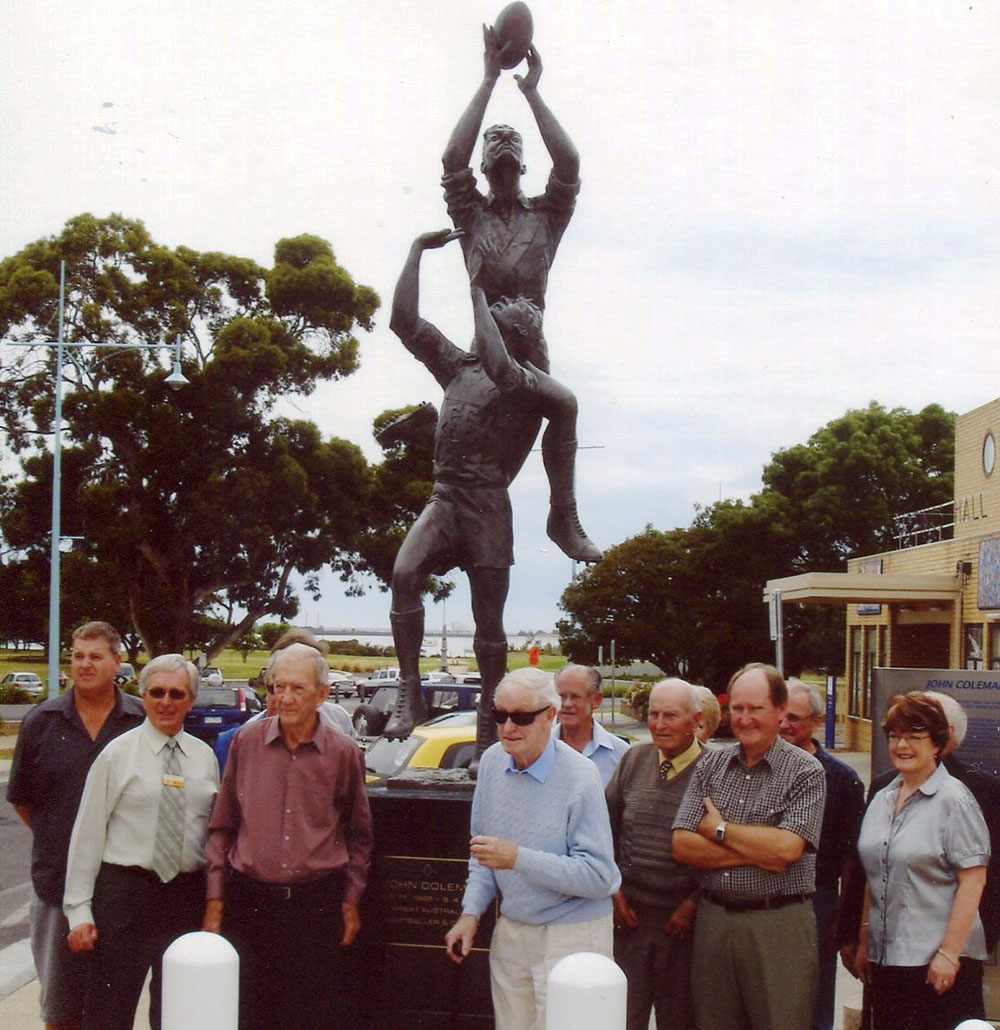
What of the other Man?
From time to time exceptional football photographs provide a degree of fame to ‘the other man’. Possibly the best known example is Graeme ‘Jerker’ Jenkins, a more than capable ruckman who provided Alex Jesaulenko with a step ladder when taking his famous mark in the 1970 Grand Final between Collingwood and Carlton.
Tom Meehan had the doubtful distinction of being ‘the other man’ on two occasions. Meehan played 73 games as fullback with St. Kilda between 1947 and 1952 and it was during this time that he was on the receiving end of a Jack Dyer shirtfront. He then transferred to Fitzroy where, in his first game, he was given the unenviable task of minding John Coleman. It was during that match that Coleman took the mark which is the basis for the Hastings statue; the subsequent goal was one of ten for the match.
The committee invited Tom Meehan to the unveiling but he was interstate at the time. Subsequently he visited Hastings and, after inspecting the statue, enjoyed lunch at the Hastings Club with some of those involved in the project.




